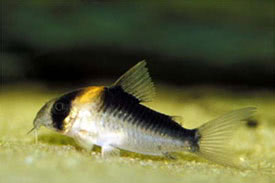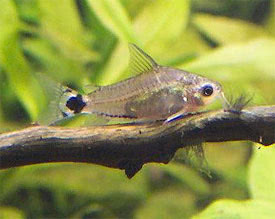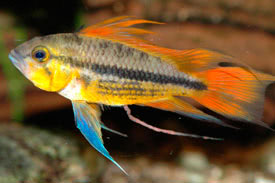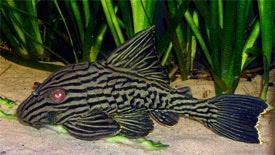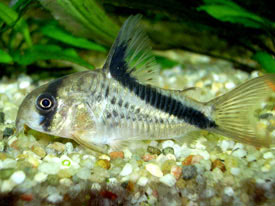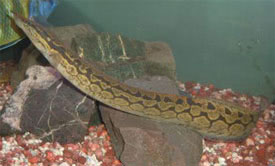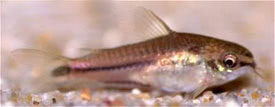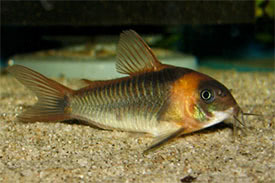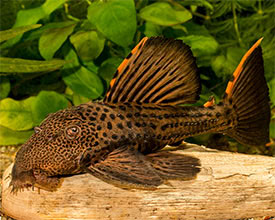
 Magyarul / Hungarian
Magyarul / Hungarian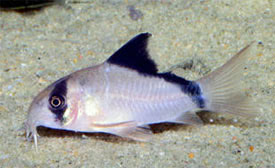

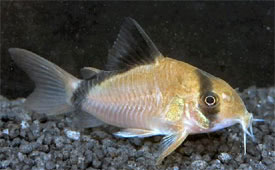
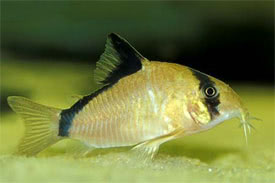
- Scientific name: Corydoras metae
- Synonyms: -
- Common name: Bandit Cory, Masked Cory
- Group: Catfishes
- Habitat: South America; Colombia, endemic to the Rio Meta river.
- Size: 5 cm
- Biotope: Along banks of slow-moving small rivers and creeks with sandy bottoms.
- Social behavior: A peaceful, schooling fish, ideal for community tanks. Do not keep with substantially larger, aggressive fish such as large cichlids.
- Diet: Omnivorous; Live, aquatic insects, white worms, Tubifex, Artemia, insect larvae, tablets and flakes are also accepted.
- Breeding: Quite easy
- Tank: Minimum 50 litres
- Population: 6-7 fishes for 70 litres
- Decoration: They like to burrow, so use fine gravel or river sand as a substrate. Provide hiding places from roots or driftwood. A few dried leaves are essential to mimic their natural habitat. The water can be filtered through peat, and the lighting shouldn’t be too bright.
- Temperature: 22-26 °C
- pH: 6.5-7.5
- Hardness: 2-15 NK°
- Lifespan: 5-8 years
Description: Corydoras metae named after Rio Meta, the river where it was first found. Very similar to Corydoras melini, both fish has a black band running from the first spines of dorsal fin through the base of the fin, to the caudal fin, but on Bandit Cory it ends on the caudal peduncle, while on the melini it runs onto the caudal fin. Corydoras metae has a beige body color, often with a pink tinge. There is also a black band on both sides of the head, that going over the top of the head, and covering both eyes like a mask. The fins are colorless, except the dorsal fin. Females have a rounder body, and the males are a little smaller. All Corydoras catfish like to shoal, so keep them in groups of 5 or more fish.
Cories are best bred in groups in a separate 40 litres tank, and should have a ratio of 2-3 males to each female. The water should be peat filtered and soft, with a temperature of 24 °C and slightly acidic (pH 6.5). Perform a large water change (50%) with RO water, or rainwater approximately 5 °C cooler than the tank water to initiate spawning. This may have to be repeated over several days before spawning is triggered. Many Corydoras species are spawning in the wet season in their natural habitat, at the same time of year as the European winter, so breeding them during summer time may fail. Courtship consists of the male touching the female with his snout and then the female will swim constantly around cleaning rocks or plant leaves in the tank, they will also become much more active. Corydoras adopt a T-shaped spawning position, where the male will grab the females pelvic fins and twist his body into hers and she will release her egg pouches at the same time as the male sperm. This is repeated several times with the female taking the egg pouches and placing them at various locations throughout the tank. After spawning the parents should be removed from the tank, as they will eat the eggs. The 20-30 eggs will hatch in 3 to 5 days and the young can be fed with fine flake food or newly hatched brine shrimp (fresh or frozen). Maintaining water quality is the key to raising cory fry so ensure regular water changes take place.


































